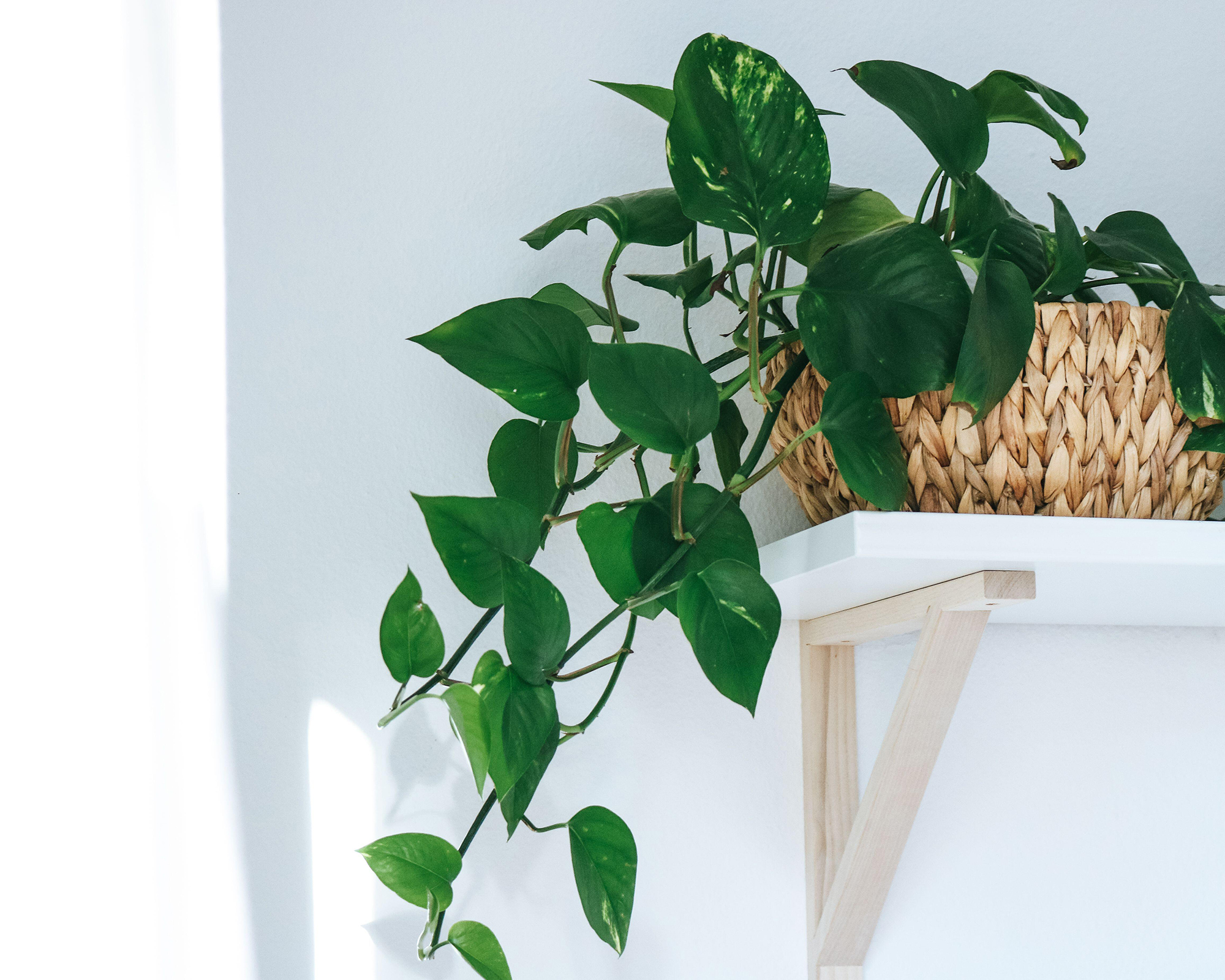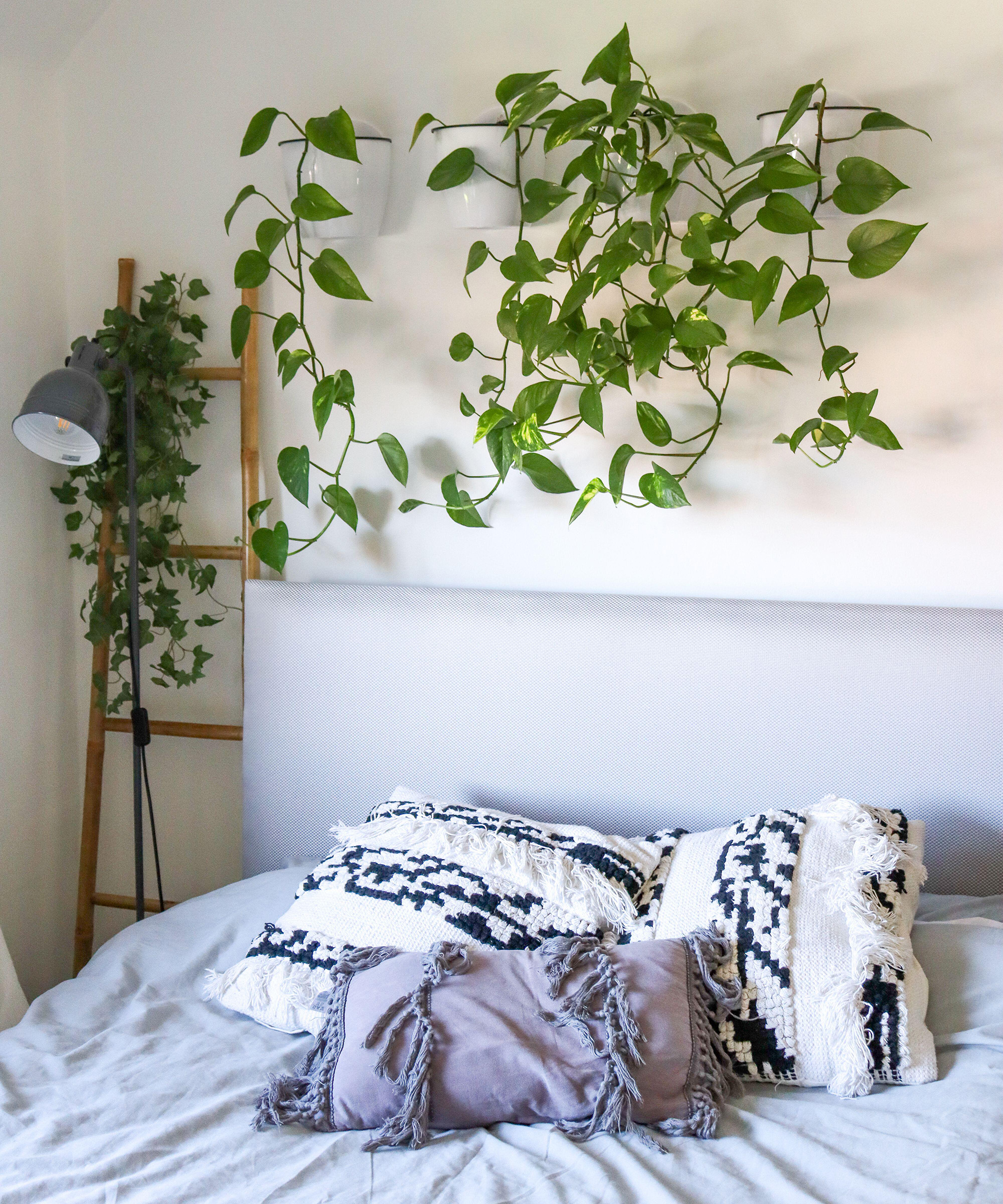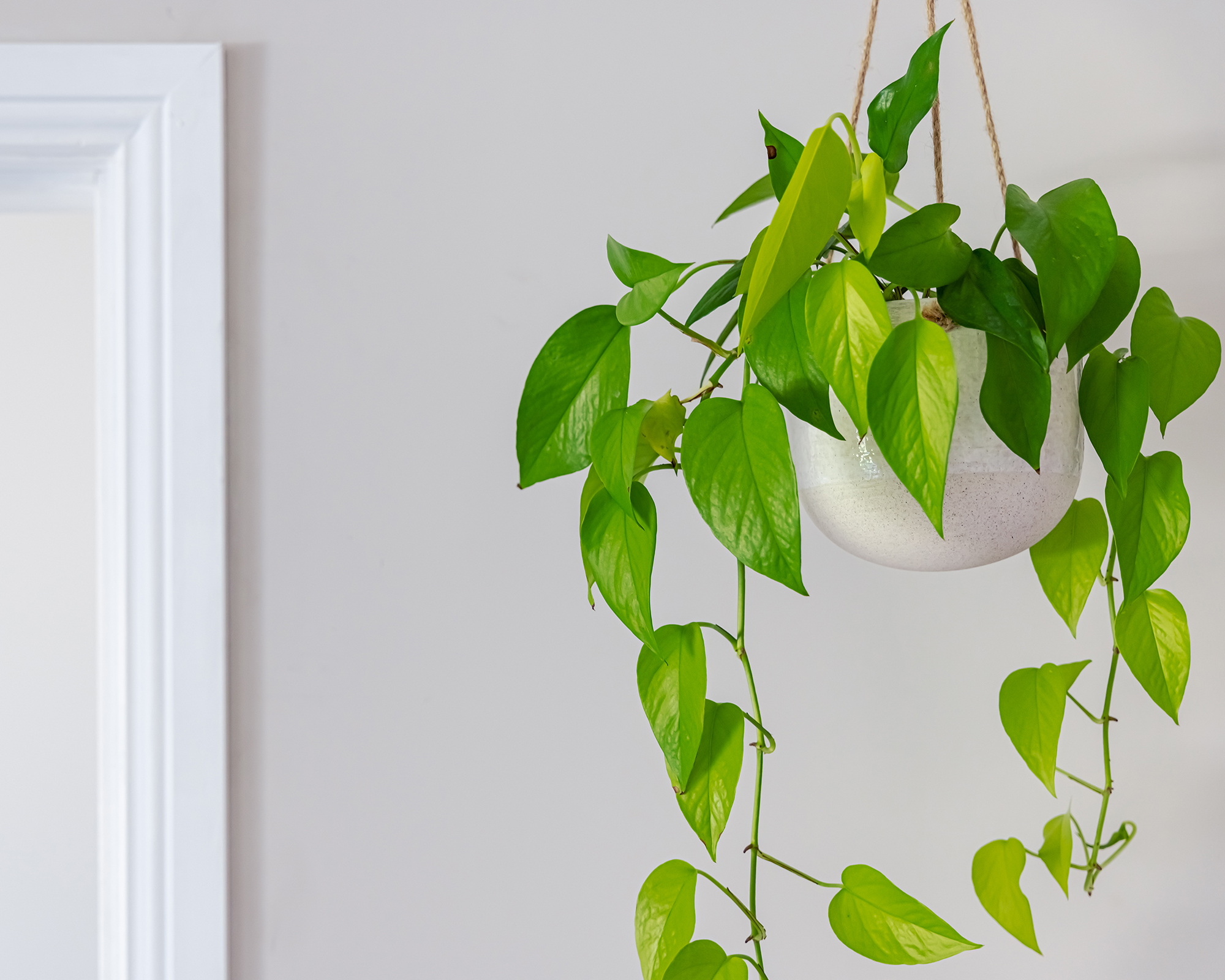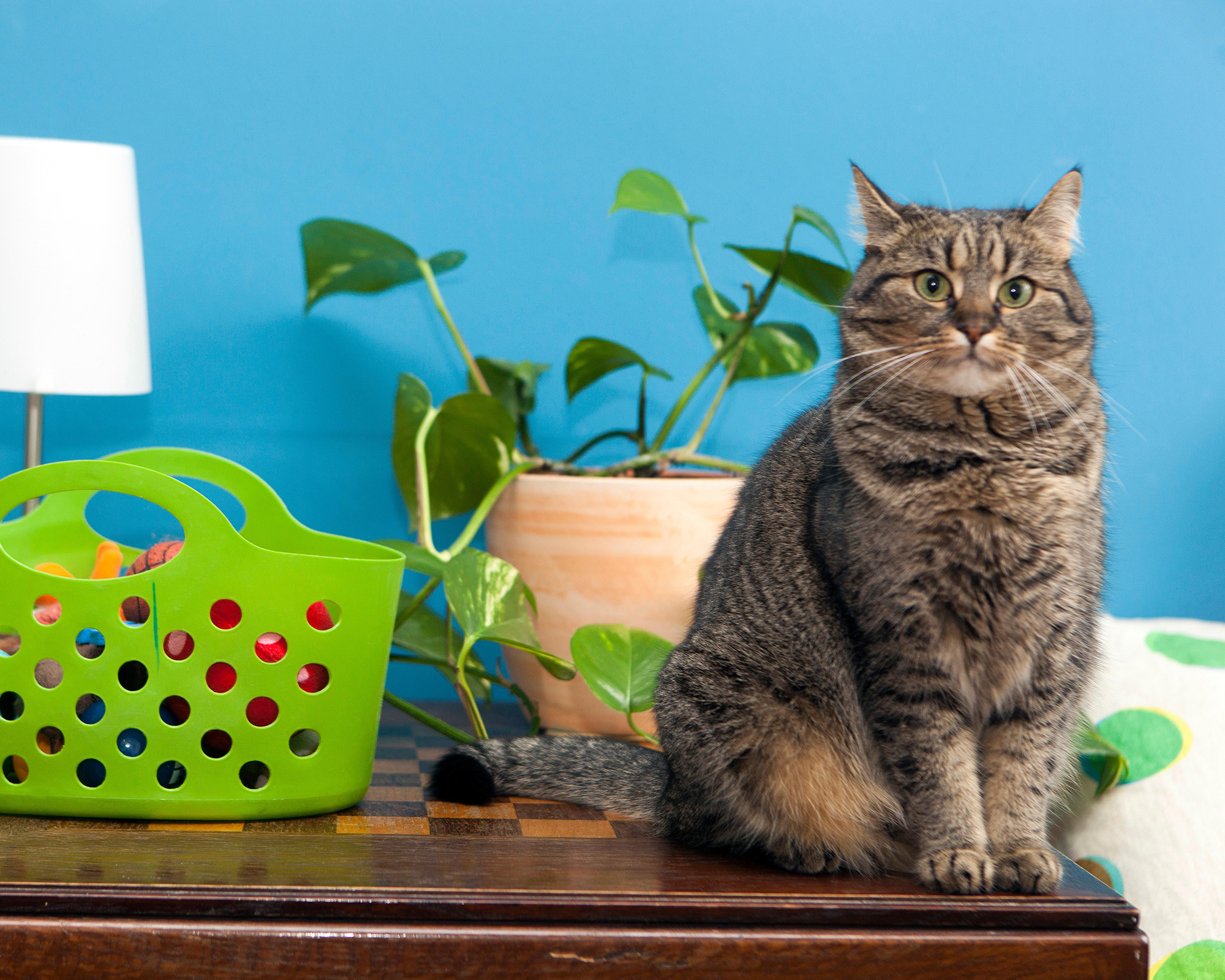Pothos care and growing guide: easy steps to successful devil's ivy plants
Our pothos care advice will help you keep this easy-to-maintain indoor plant looking beautiful all year round


One of the easiest houseplants to grow, pothos is the perfect choice for newby indoor gardeners, loved for its lush, leafy stems. As well as pothos and devil’s ivy, this leafy trailing or climbing plant may also be labelled as silver vine, money plant or Ceylon creeper, so try tapping its Latin name Epipremnum aureum into suppliers’ websites to find the right one. Pothos is also often mistaken for a Philodendron scandens or heart-leaf which looks almost identical, with a similar trailing or climbing habit.
There are a few colorful cultivars of pothos if the green and yellow variegated species does not suit your interior. ‘Neon’ is a yellow-leaved form, with no variegation, which will provide a splash of bright color, or try 'Marble Queen’, with its rich green and cream patterned leaves.
The larger leaved Epipremnum pinnatum is dark green with deeply divided leaves but, confusingly, this species name is also often used as a synonym for E. aureum. Don’t worry too much about the names, though, because both plants perform in a similar way, so simply go for the best indoor plant for you and follow the pothos care advice below.
3 essential tips for pothos care
John Maree, founder of Oxy Plants, says: 'Pothos originate from the French Polynesian Islands in the Pacific and can really help to turn your indoor garden into a tropical paradise. It’s also known as devil's ivy, a name that’s thought to have arisen because it’s very difficult to kill, and will bounce back after periods of neglect, which also explains why it’s so popular.'
1. Keep it out of direct sunlight
Like the Chinese money plant, pothos prefer indirect light. John Maree suggests placing your pothos away from a bright window: 'Devil’s ivy is a climbing plant and used to ascending from the dappled light on the forest floor up into a leafy canopy, so try to replicate these light conditions for your indoor plant ideas. Look for a brightly lit spot just out of reach of direct sun for optimum growth. Too much sunlight can cause sunburn and bleach the leaves.'
Pothos will grow well in low humidity levels so it can be successfully grown as an office plant, as well as being suitable for most areas in the home. But in darker areas, your plant may not grow as quickly and could lose its variegation, turning mostly green.
Also remember that as time passes pothos care will include the need for sufficient space for its stems to grow, either up a pole, or trailing down from a shelf or tall plant stand.

The leaf colors of a pothos can vary widely, and the variegation may be less pronounced in shadier sites
2. Let the stems do their thing
The species has beautiful, marbled heart-or-spear-shaped green and yellow leaves that form on long, flexible stems, which can be left to dangle from a pot on a shelf, or trained up a mossy pole or along horizontal wires fixed to a wall.
Patch Plants’ Plant Doctor, Richard Cheshire says he likes to grow pothos as an indoor hanging plant in a basket, where its stems can trail elegantly over the sides, and adds: 'Remember that this will become a large plant over time, with each stem reaching several feet in length.'
However, if you want flowers, this is not the plant for you, as a genetic impairment means it never produces blooms, reproducing instead via its stems and roots.

Try growing pothos in pots on a shelf to form a leafy veil over your bed, which research says can help you to relax and unwind
3. Water no more than once a week
Plant your pothos in a pot with drainage holes in the base, and water when the top of the compost feels dry, running it under a tap and then leaving the excess moisture to drain out before returning it to a waterproof container.
'Wet or waterlogged compost can encourage root rot and during spring and summer I would suggest watering no more than once every other week, as a guide,' says John Maree. 'Reduce this to once a month during winter.'
He says that overwatering is one of the few ways you can kill these low maintenance indoor plants, but they will bounce back quickly if watered after a period of neglect. Pothos are not heavy feeders and require a dose of balanced liquid fertilizer once a month from spring to fall.

The heart-shaped leaves of the golden pothos create a splash of color in a hanging basket, with each stem potentially growing a few feet in length
Common pothos care problems to look for
The almost indestructible pothos is also generally resistant to most pests and diseases, apart from root root if the compost becomes too wet.
'While pests are rarely a problem, like fiddle leaf figs and dracaena, pothos very occasionally may suffer from mealybugs, spider mite, scale and thrips, which can live in the cubbyholes between stems and the undersides of the leaves,' says John Maree. 'If you do spot a pest or the damage they cause, give your plant a wash in the shower or use a damp cloth to remove all the pests as best you can.'
If white fluffy-coated mealybugs or scale insects, which look like little hard bumps, persist, try dabbing them with a cotton bud soaked in a little methylated spirits.
Is pothos toxic to cats?
'Unfortunately, yes, pothos is toxic to cats and other pets if eaten,' says Richard Cheshire. 'If your cat has had a sneaky nibble, they may show signs of an upset stomach and start vomiting – a trip to the vet is usually a good idea if you're worried. You can discourage any curious pets by putting your devil's ivy up high on a shelf or in a plant stand, or try using citrus peels around the base of a pothos to deter them.'
You can keep your pets safe by learning about other plants that are poisonous to cats and poisonous plants for dogs too.

Pothos plants are toxic to cats so keep yours on a high shelf where your pet cannot reach it, if they are prone to nibbling leaves

Epipremnum pinnatum has large, sometimes lobed leaves
Pothos vs Philodendron scandens
Pothos is often confused with Philodendron scandens, so you might wonder which is the better indoor plant species. When asked which Richard would recommend, he says: 'Both are fast growers that prefer to be left to their own devices, without too much pampering. They're also equally good at telling you if they're in need of a drink and are quick to bounce back after periods of neglect. You really can't go wrong with either, so why not have both?'

For a compact plant, train your pothos up a mossy pole, tying in the stems as they grow – you can prune out overlong growth
Where to buy pothos plants
Shop pothos plants in the US:
Shop pothos plants in the UK:

Zia Allaway is a garden book author, editor, and journalist, and writes for a range of gardening and women’s magazines, including Easy Gardens, Homes & Gardens and Livingetc, as well as The Guardian and The Daily Telegraph newspapers. She has also written books for the Royal Horticultural Society and Dorling Kindersley publishers, including Eco-Gardening, Compost, Low Maintenance, Practical House Plant Book, Practical Cactus & Succulent Book, Indoor Edible Garden, What Plant Where, and the Encyclopedia of Plants and Flowers.
